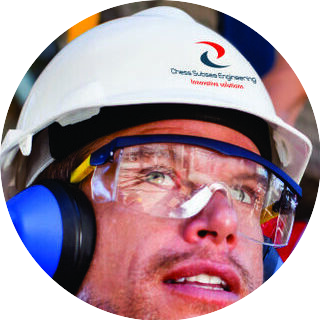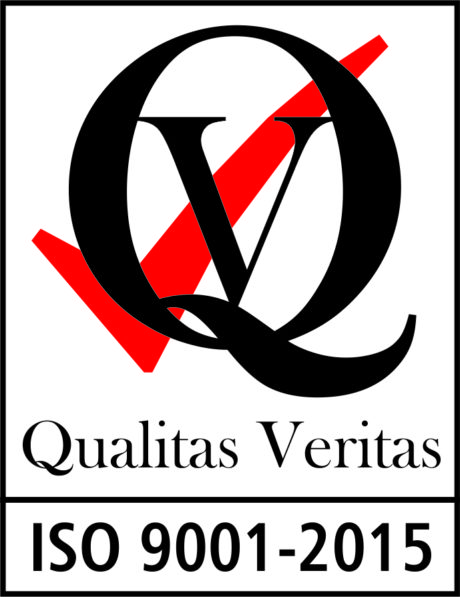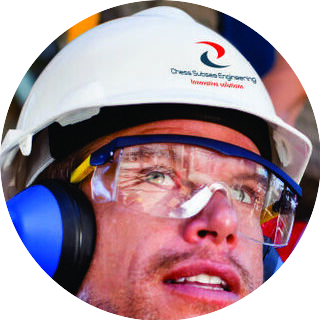Lucas
Forum Replies Created
-
AuthorPosts
-
February 20, 2020 at 9:37 am #4939

LucasParticipant***FIELD ARCHITECTURE: WELL TESTING***
For satellite wells with individual flowlines tied back to the production platform, it is often simply a matter of connecting the well flowlines to the well test manifold. A well test heater may be needed ahead of the separator that otherwise might not be necessary in the case of dry tree production.
February 19, 2020 at 6:17 am #4902
LucasParticipant***FIELD ARCHITECTURE: WELL TESTING***
Good reservoir management requires individual wells to be periodically flow tested to measure their individual performance and production fluid characteristics. For dry tree production, a well testing manifold and test separator are usually provided as part of the production facilities. The flow from each well may be individually diverted through the test header to the test separator. The same can be done in the case of subsea wells.
February 18, 2020 at 9:12 am #4863
LucasParticipant***FIELD ARCHITECTURE: COMMINGLING OF PRODUCTION***
When wells are commingled, the performance of the wells must be matched. Higher pressure wells must be individually choked so as to not impede the flow of weaker wells. If the expense can be justified, a HP and LP manifold can be provided with separate flowlines for each.
February 18, 2020 at 9:10 am #4862
LucasParticipant***FIELD ARCHITECTURE: SUBSEA TIE BACK DISTANCE: MAJOR CONSIDERATIONS***
Long tie-back distances impose limitations and technical considerations, however. The following are some of the main considerations:
I. Reservoir pressure must be sufficient to provide a high enough production rate over a long enough period to make the development commercially viable.
II. Flow assurance issues of hydrate formation, asphaltene formation, paraffin formation and high viscosity must be addressed.
III. Gel strength of the cold production fluids might be too great to be overcome by the natural pressure of the well after a prolonged shutdown.February 14, 2020 at 9:10 am #4861
LucasParticipant***FIELD ARCHITECTURE: COMMINGLING OF PRODUCTION***
Commingling production is a good way to reduce the number of flowlines and save cost. Production from a group of individual wells may be commingled in a subsea production manifold situated near the wells. The commingled production may be delivered in a single flowline to the production facilities.
February 12, 2020 at 10:47 am #4860
LucasParticipant***FIELD ARCHITECTURE: SUBSEA TIE BACK DISTANCE: MAJOR CONSIDERATIONS***
Long tie-back distances impose limitations and technical considerations, however.
The following are some of the main considerations:I. Reservoir pressure must be sufficient to provide a high enough production rate over a long enough period to make the development commercially viable.
II. Flow assurance issues of hydrate formation, asphaltene formation, paraffin formation and high viscosity must be addressed.
III. Gel strength of the cold production fluids might be too great to be overcome by the natural pressure of the well after a prolonged shutdown.February 11, 2020 at 10:26 am #4859
LucasParticipant***FIELD ARCHITECTURE: SUBSEA TIE BACK***
For a large scale new field development involving the installation of new production facilities, the production platform is usually optimally located relative to the planned production wells. Many marginal fields are developed with subsea completions with subsea tie-back flowlines to existing production facilities some distance away. Subsea tie-backs are an ideal way to make use of existing infrastructure.
February 10, 2020 at 7:59 am #4857
LucasParticipant***FIELD ARCHITECTURE: INTRAFIELD FLOWLINES: MAJOR FLOWLINE ROUTING CONSIDERATIONS : DIFFERENCE IN FLOWLINE METALLURGY***
Differences in flowline metallurgy (such as a well high in CO2 versus one that is low in CO2). Minimizing the length of the more expensive (alloy) flowline might result in net savings.
February 9, 2020 at 12:18 pm #4853
LucasParticipant***FIELD ARCHITECTURE: INTRAFIELD FLOWLINES: FLOWLINE ROUTING CONSIDERATIONS***
Major flowlines routing considerations among others are:
I. Differences in reservoirs and well performance.
II. Differences in flowline metallurgy
III. Differences in pigging requirements
IV. Providing clear areas or easements for future wells or flowlines
V. Avoiding interference with production platform moorings.
VI. Avoiding hazards such as debris, outcroppings, canyons, or geotechnically unstable areas.
VII. Avoiding existing pipelines or cables.
VIII. The direction of approach to production platform, often dictated by the riser configuration.
IX. Types of Well FluidFebruary 8, 2020 at 8:47 am #4852
LucasParticipant***FIELD ARCHITECTURE: INTRAFIELD FLOWLINES***
Intrafield flowlines are the network of pipelines between the individual wells, well templates, subsea manifolds, and production platforms. Intrafield flowline requirements will be established by the number of wells, well locations, well grouping and manifolding arrangements, well testing requirements, pigging requirements, gas lifting requirements, gas injection requirements, water injection requirements, operating pressures, production rates and shut-in pressures.
February 6, 2020 at 6:29 am #4851
LucasParticipant***FIELD ARCHITECTURE: MAJOR CONSIDERATIONS: WELL GROUPING : TEMPLATE & CLUSTERED WELLS : TEMPLATE DISADVANTAGES***
The following are some disadvantages of production well templates as compared to clustered satellite wells:
I. Design and fabrication time may be longer due to greater complexity.
II. Heavy templates may be more susceptible to subsurface instability, such as shallow water flows.
III. Less flexibility in determining well locations.
IV. Fewer qualified contractors and suppliers.
V. ROV access may be limited due to space constraints.
VI.There may be safety concerns related to simultaneous drilling and production operations.February 4, 2020 at 9:19 am #4834
LucasParticipant***SHALLOW WATER***
An offshore field is considered a shallow-water subsea development if the water depth at the location is less than 200 m (656 ft). In practice, shallow water is the water depth within a diver’s reach.
February 3, 2020 at 3:25 pm #4832
LucasParticipant***Surface Conductor***
Surface conductor is the first casing installed for guiding the drill bit when a well is first started (usually 30”). It may be driven, jetted or drilled into place.
February 2, 2020 at 6:16 am #4824
LucasParticipantValve Signature Emulato (VSE) monitors subsea actuators conditions or performance from topside.
February 2, 2020 at 6:10 am #4823
LucasParticipant***FIELD ARCHITECTURE: COMMINGLING OF PRODUCTION***
When wells are commingled, the performance of the wells must be matched. Higher pressure wells must be individually choked so as to not impede the flow of weaker wells. If the expense can be justified, a HP and LP manifold can be provided with separate flowlines for each.
-
AuthorPosts






